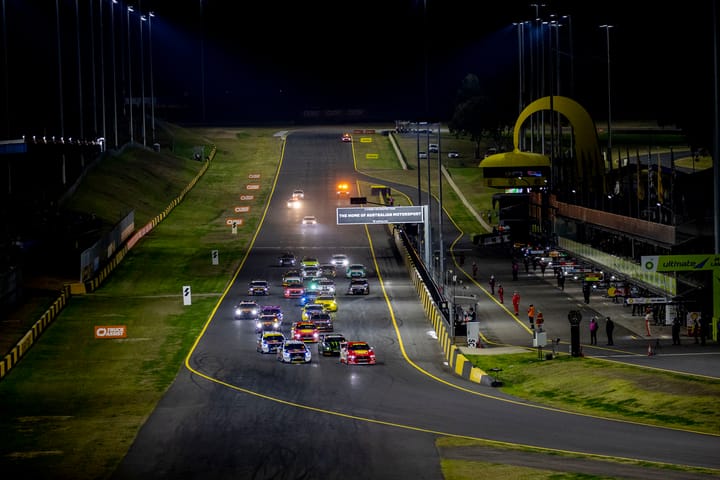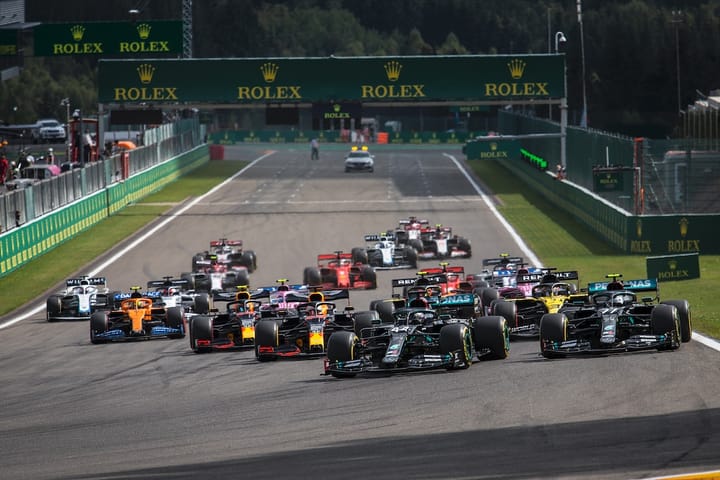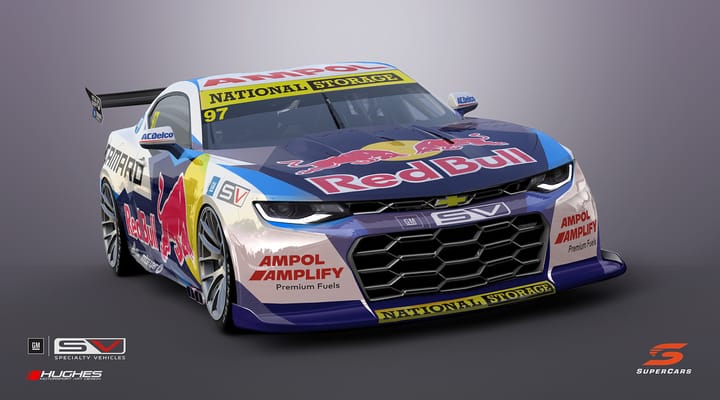Byte Sized Introduction To The Virtual World
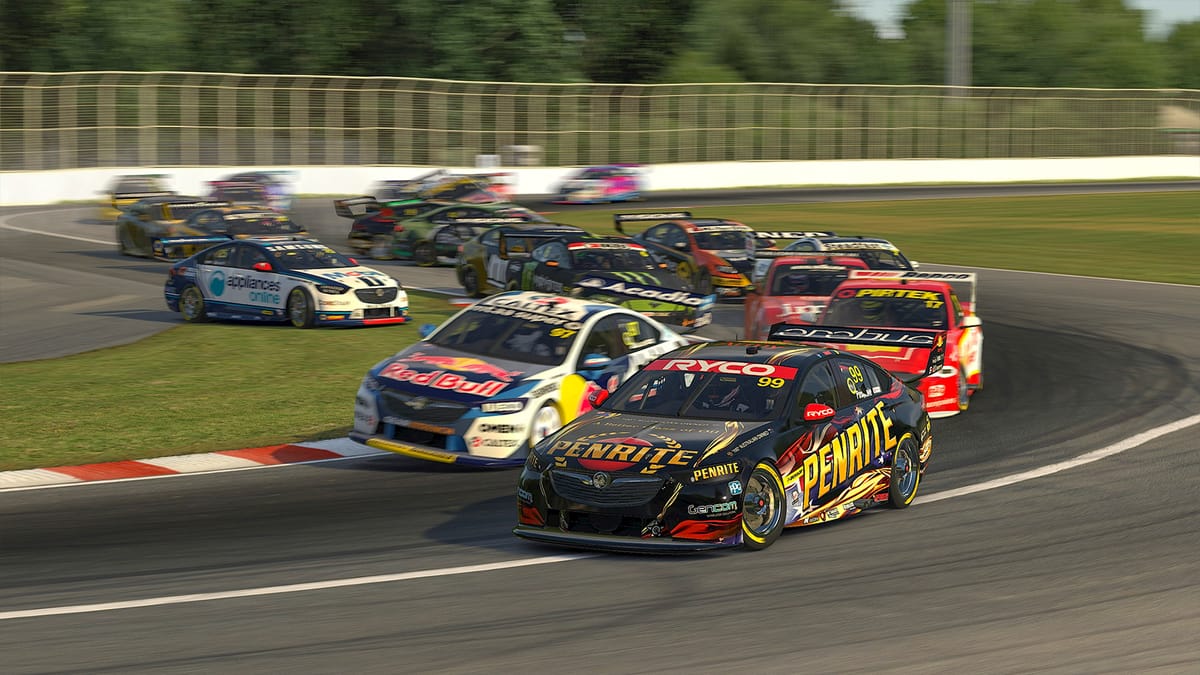
The world’s top drivers and championships have swapped bitumen for bytes during the COVID-19 shutdown.
Scott McLaughlin is an e-race winner in Supercars and IndyCars, Charles Leclerc and Alex Albon have been battling in virtual F1, and the list of Supercars wildcards arriving ‘across platform’ is led by grand prix ace, Max Verstappen.
Even two-time Supercars champion Marcos Ambrose was lured out of his reclusive retirement in Tasmania for a virtual tangle with a new generation of Supercars heroes.
The explosion of virtual motorsports since the start of 2020 is all down to the COVID-19 pandemic. With large gatherings closed and borders shut, the motorsport world has shifted its activities online – in part to satisfy commercial obligations, in part to keep fans engaged.
It’s all been made much easier by the iRacing platform which has been operating as a ‘racing simulation online video game’ since 2008 and has been focussed for everything from Formula One and NASCAR to Australia’s two leading touring car championships.
But the most intriguing aspect of the motorsport lockdown is that, for the first time, real racers are displacing sim experts behind the wheel in serious numbers. And competing with their peers in the virtual world – a first for many.
So, that begs a couple of questions. Are our best racetrack drivers also the best when it comes to racing online? And what role can sims really play in driver development?
THREE AMIGOS IN THE SIM SERIES
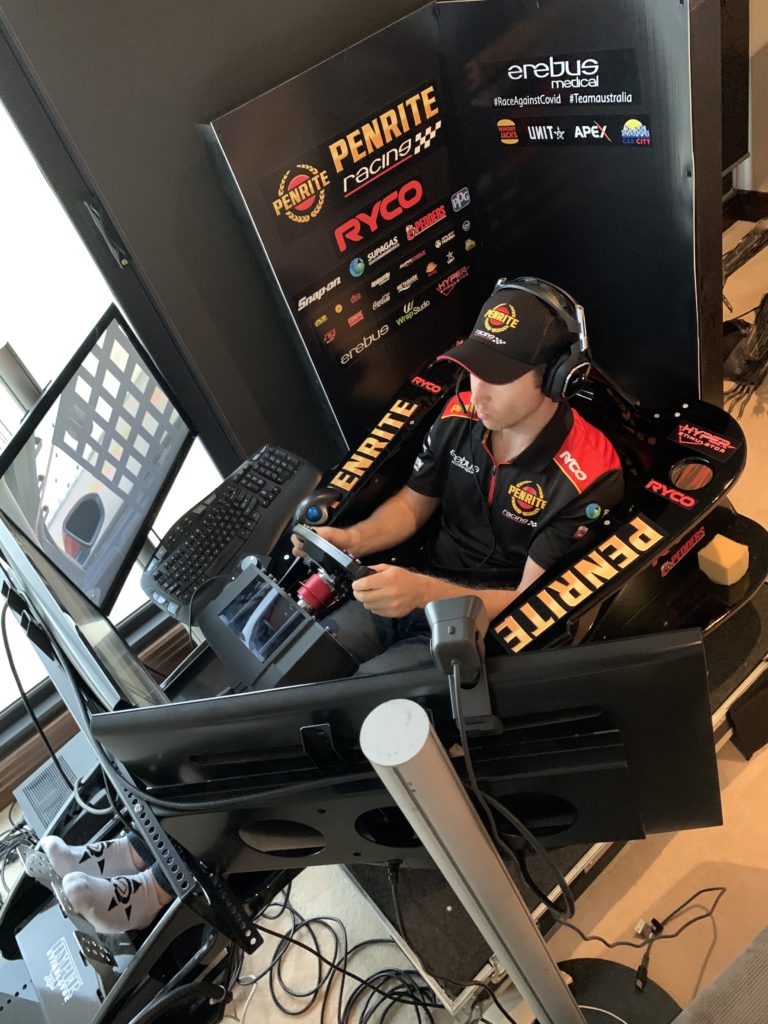
David Reynolds is a SIM racer of necessity rather than choice.
Multi-class champion Garth Tander was pulled into e-racing as part of his commitment to the carsales TCR Series calendar but has quickly warmed to it.
Anton De Pasquale, Reynold’s younger team mate, is a digital nature like McLaughlin who has been using SIM racing as both entertainment and a training tool for several years.
Yet, surprisingly, these three ‘generations’ of Aussie racing stars are aligned on the opportunities and challenges presented by sims and virtual racing.
“I’m more of the old school person that says ‘not really’. But you talk to the young kids and they swear by them,” says Reynolds.
“I’ve played them occasionally but I’ve sucked really bad at them and sort of shied away. But I can see if you were to start, like a young kid or an inexperienced gentleman driver, and you wanted to learn what to do and [get to know] the tracks… I can see how it accelerates your learning curve, at a relatively cheap cost,” he adds.
For Tander, the key attraction has not been learning, but a chance to keep his “racing brain” sharp.
“Initially I just felt it was something to do on a weekly basis to break up the monotony [of the racing shutdown],” the three-times Bathurst 1000 winner explains.
“But then as I got more into it, I started to realise that it’s actually really good for keeping your racing brain engaged. Even over the Christmas break, it always takes you an event or two to get back in the groove… [But] I’m finding that the e-Sports stuff is keeping the brain ticking.”
And properly so, as Tander continues.
“That first [carsales ARG eSports Cup] Thursday night we did, I got home, and it was just like coming home from a regular race meeting. My brain was going flat out and I couldn’t sleep — and that’s exactly what it’s like on a Sunday night after a real race.
“So, it’s obviously engaging those parts of your brain that you use in the race car in the real life.”
De Pasquale is one of Australia’s most promising young guns and is a sim ‘veteran’ having used the US-developed iRacing platform as staple in his development after he returned from junior single-seater racing in Europe and switched to Supercars.
“I’ve done a bit of sim stuff all the way through. I got my own when I moved back from Europe and then got a bit more into it,” he says.
“Now there’s a heap of us [pro racers] online that have a good time. At the same time I use a sim at the Erebus workshop to get ready for events and learn new tracks. So there’s a real fun element to it, but there’s a serious part too.”
De Pasquale speaks for the trio when he explains short-cutting track knowledge is a key benefit for real-world racers.
“If you’re doing a race in Europe or somewhere and never been there, before you fly over there you can do a thousand laps if you want to. So, when you do get there you know all the points — just all the basic stuff so you don’t waste time.
“When I first went into Supercars there was six or-so tracks that I’d never been to, so the sim was a big help. And because time is really limited, the more practice you can do, the better,” the Penrite #99 driver explains.
MOTION OR STATIC – WHY THEY’RE DIFFERENT
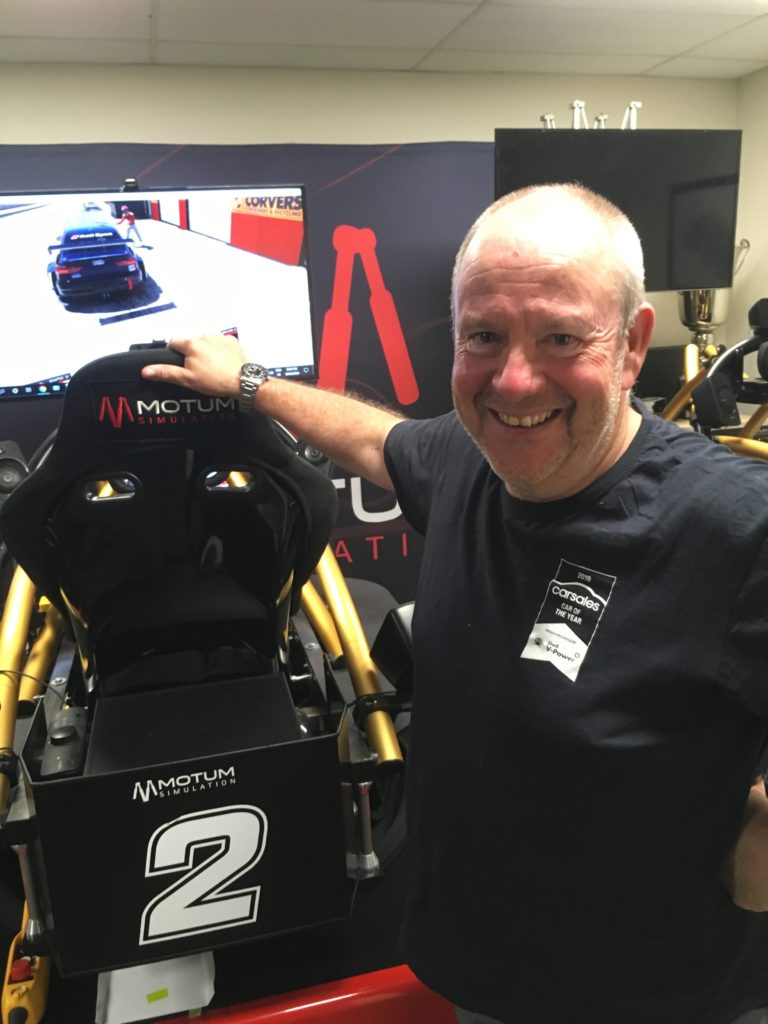
Apart from the multi-million-dollar Formula One simulators, both static and motion sims are used across the virtual racing world.
But experts reckon the choice between the two plays a significant part in defining the split between real-world and sim racing skills. Even more important is the ability to use that sim to build better real-world racers.
Melbourne-based company Motum Simulation is Motorsport Australia’s official sim partner. Founder and chief boffin, ex-racer Steve Hoinville, says his company’s products have to straddle the thin line of satisfying real-world racers looking to learn and improve as well as serious gamers.
“When a driver is controlling a race-car on the limit of adhesion, he/she will be sensing the threshold of traction through the seat of their pants. When the car starts to slide they will feel the loss of lateral G, increased or reduced rotation of the car [oversteer or understeer] and the lightening of steering effort, and react to this change before any other input is received,” he says.
“These are all the inputs that the driver can use or develop from scratch on a [multi-axis motion] simulator.
“The traditional sim racer will learn the track/car combination by rote — anything up to 600-800 laps in preparation for a single race meeting. They’ll use a static cockpit and rely on only the visual cues to sense if the car is starting to loose grip.
“With the carSales ARG Esport Cup and the Supercars BP Allstars Eseries, we are seeing real-world drivers with years of experience in static sims leading the field – Scott (McLaughlin), SVG (Shane van Gisbergen) and Anton. The rest of the field who are in static sims are spending six to eight hours a day learning a new skill.”
But he says there is a real difference in the motion sims, referred to as yDoF because they have six directions of freedom in movement.
“Those in 6DoF sims are able to apply the skills they have honed over the years with minimal re-training.”
For Reynolds, the skills honed from seasons in Supercars actually count against him in a static sim in the virtual world.
“All my muscle memory is wrong for the game. I spent my whole life understanding the feel of the tyre and feeling the grip underneath me, but when you transfer that into the [static] simulator, there’s zero. You have to almost drive by vision and it’s just very different,” he says.
“In our Supercars, we hit curbs and bounce off the curbs and that’s how you get the time out of it, but in the game you can’t really do that because the car rolls and you look really silly.
“But I can see how Anton, my teammate, drives. It looks like he’s driving a real car but, for some reason, I can’t do that. I don’t know why — I’m still understanding a lot of it.”
Motum engineer and sim racer, James Owen, explains.
“The skill transfer isn’t always two-way. Yes, it’s easier for real racers to drive sims [competitively] than sim racers to drive real cars. In the virtual world about 70-80 per cent of pace on a sim can be found through real driving skills – but the rest is a matter of learning to drive that particular sim.”
“When the goal is replicating real life, 6DoF sims can be made to be frighteningly accurate but in the high-level online iRacing competitive scene, every effort is made to remove realism in order to shave time – even to the point of having barely drivable cars. Driving at these levels is its own separate skill,” Owen contends.
WHERE NEXT
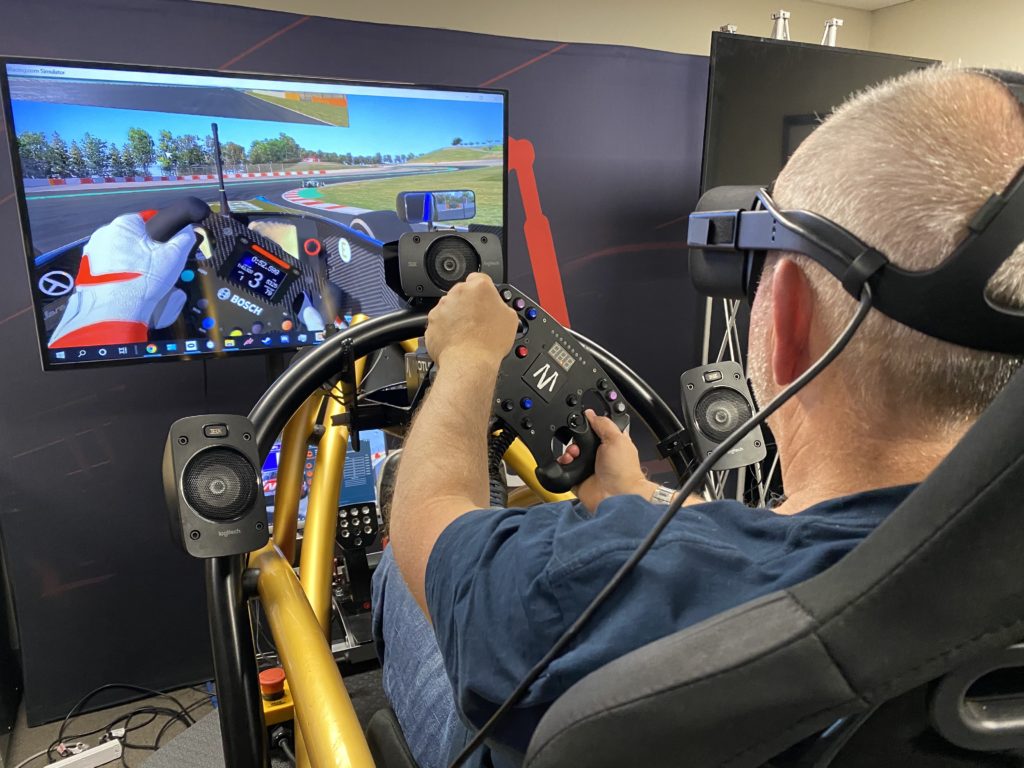
Matt Simmons, who made a successful graduation from sim racing to the real world by winning the 2015 Nissan PlayStation GT Academy contest, believes the COVID-19 pandemic has fundamentally changed the view of virtual racing.
“As bad as this period has been to people right across the globe, it has been a catalyst for change. Young professional [racers] are coming to people’s attention and they’ll expect sim racing to be part of their career ongoing,” Simmons says.
Our three real-world racers agree that the challenge for drivers migrating from sims to a real race-car will always be adapting to new feedback loops and, for rookies, coping with a risk-versus-reward scenario that’s missing from the digital world.
“It will only get you to a certain point. It won’t get you the last maybe couple of seconds that you need because you’re not combatting fear. The price of everything when you shunt. You know, life and death,” says Reynolds.
“There’s a whole other human element that you don’t have driving a simulator and obviously just the general feel of the tyre when you’re at the maximum grip. It’s all very, very different.”
Tander says the famous rule that it takes 10,000 hours of repetition to become an expert at anything, including race-car driving, cannot be ignored.
“We saw that a little bit with the PlayStation Academy and what Nissan did and [Australian sim racer] Matt Simmons obviously was part of that. I haven’t spoken to Matt about this, but it looked to me as if he still needed that [real life racing] grounding.
“I think it comes all the way back to any sport you do. You talk to Ricky Ponting… I know Punter, and I say, ‘Mate, there’s no chance I would stand at the other end of a pitch and have someone hurling a ball at me at 150km/h’ and he goes, ‘Yeah, but I’ve been holding a cricket bat since I was three’.
“Same goes for driving a Supercar down Conrod at 300km/h. I was doing 80 or 90km/h when I was seven years old, so it’s natural to me
“I don’t you think you get that from a SIM. I think it can absolutely help you with that racing strategy and racing nous, and learning how to position yourself. But as far as actual feel of a race car and ultimate lap speed, I don’t think you could start on a SIM and then transfer it into a race car in a short period of time,” the old hand concludes.
Simmons, the winner of the Simmons, agrees 100 per cent with Tander.
“Getting comfortable with close racing in the real world can only be done on the track. There’s definitely sim skills you can transfer but as good as the Nissan program was, once we got to professional level seat time was limited,” Simmons explains.
Ironically, Simmons believes the mid-levels of the Nissan PlayStation GT Academy were the most beneficial.
“We were in cars and racing three or four times a week. That’s what you need to normalise your experience.”
“The ideal graduation for a sim racer would be a series that had maybe 10 or more rounds with three or four sprint races each round. That’s the program you need to get sim racers to evolve to be track racers”.
Mike Sinclair is editor-in-chief of carsales.com.au


